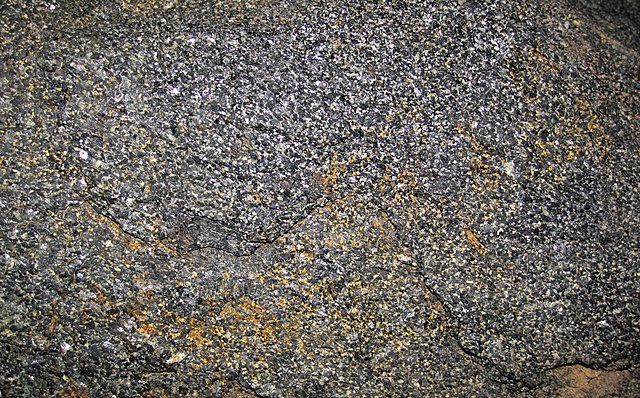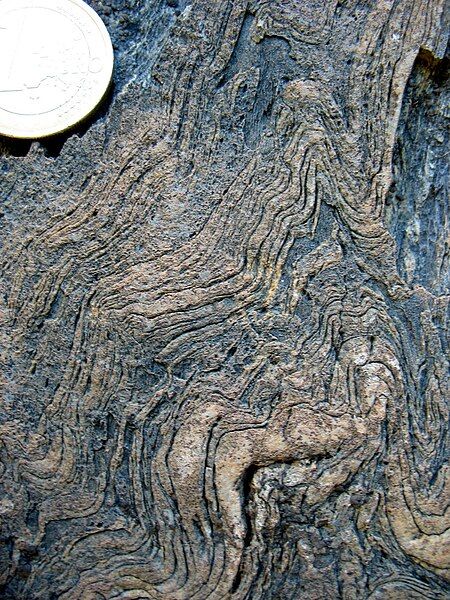Subduction zone metamorphism
A subduction zone is a region of the Earth's crust where one tectonic plate moves under another tectonic plate; oceanic crust gets recycled back into the mantle and continental crust gets produced by the formation of arc magmas. Arc magmas account for more than 20% of terrestrially produced magmas and are produced by the dehydration of minerals within the subducting slab as it descends into the mantle and are accreted onto the base of the overriding continental plate. Subduction zones host a unique variety of rock types formed by the high-pressure, low-temperature conditions a subducting slab encounters during its descent. The metamorphic conditions the slab passes through in this process generates and alters water bearing (hydrous) mineral phases, releasing water into the mantle. This water lowers the melting point of mantle rock, initiating melting. Understanding the timing and conditions in which these dehydration reactions occur, is key to interpreting mantle melting, volcanic arc magmatism, and the formation of continental crust.

Melt production and accretion of melt onto continental crust in a subduction zone
Pressure-temperature pathway for subducted crust
Blueschist containing the sodic blue amphibole, glaucophane
Transition from blueschist to eclogite facies rock, containing glaucophane, omphacitic pyroxene, and garnet
Metamorphism is the transformation of existing rock to rock with a different mineral composition or texture. Metamorphism takes place at temperatures in excess of 150 °C (300 °F), and often also at elevated pressure or in the presence of chemically active fluids, but the rock remains mostly solid during the transformation. Metamorphism is distinct from weathering or diagenesis, which are changes that take place at or just beneath Earth's surface.
A cross-polarized thin section image of a garnet-mica-schist from Salangen, Norway showing the strong strain fabric of schists. The black crystal is garnet, the pink-orange-yellow colored strands are muscovite mica, and the brown crystals are biotite mica. The grey and white crystals are quartz and (limited) feldspar.
Amphibolite formed by metamorphism of basalt showing coarse texture
A mylonite (through a petrographic microscope)
A metamorphic rock, deformed during the Variscan orogeny, at Vall de Cardós, Lérida, Spain








